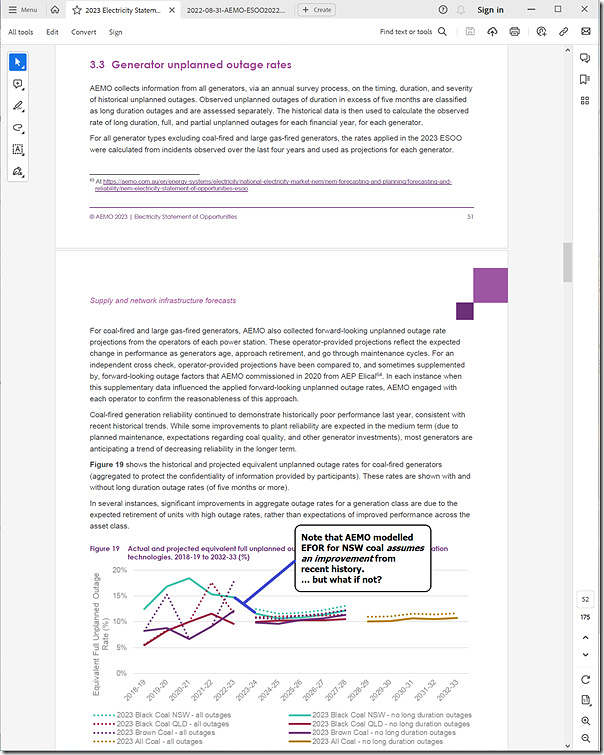Note that I have this out as a separate, short article for several purposes – including that it will be more directly referenceable in future.
It’s meant to tie in with today’s broader review of the 2023 ESOO here (which is still being completed).
—-
Through various places within the 2023 ESOO the AEMO highlights that coal EFOR (equivalent forced outage rate) is a significant factor in the modelled results:
1) It’s typically higher than we would have expected to see a decade or more ago …
… before operational patterns and commercial returns were challenged by the energy transition
2) And they are forecast to worsen, as these units age and reach the end of the ‘bathtub curve’.
At the end of 2022 we highlighted how aggregate unavailability of all operational coal units reached 24% in aggregate for the 12-month period ending 31st December 2022:
1) This was noted in this article at the time;
2) Which was fed from the 198-page GenInsights Quarterly Update for Q4 2022.
Those numbers included both planned and forced outages … and covered full and partial outages (referenced to Registered Capacity for reasons noted here).
Here’s p52/175 of the 2023 ESOO:
I’ve annotated the image to highlight that the AEMO is actually assuming that average EFOR for NSW coal units will actually decline compared to what happened in the past 4 years. Whilst part of this is probably due to the fact that the (poor availability) Liddell units have now closed, it does beg the question … what happens to USE projections if this does not actually drop?
There’s more we’d like to delve into here, but that will have to be another day…



Leave a comment